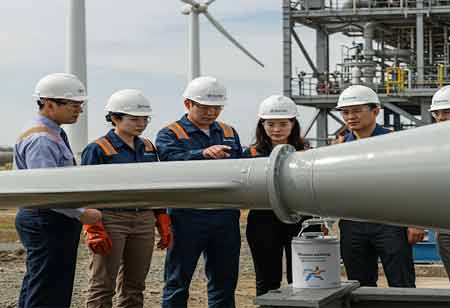Thank you for Subscribing to Construction Business Review Weekly Brief
Specials
- Apartment and Condominium Contractors Canada
- Decking Canada
- Architectural Glass Europe
- MEP APAC
- Construction Saudi Arabia
- German Apartment and Condominium Contractors
- Construction Law APAC
- Outdoor Construction
- Foundation Construction Canada
- MEP Canada
- Kitchen and Bath
- Cold Storage Construction APAC
- Precast Concrete Europe
- Construction Staffing Europe
- Pre-Construction Services
- Flooring System APAC
- Scaffolding Canada
- Swimming Pool Construction Canada
- Construction Management Canada
- Cold Storage Construction Canada
- Flooring Systems Europe
- Residential Construction
- Concrete Canada
- Construction Cladding Europe
- Construction Cladding APAC
- Concretes, Aggregates and Construction Materials APAC
- Concretes, Aggregates and Construction Materials Europe
- Commercial Contractors Europe
- Commercial Contractors APAC
- Dummy
- Construction Insulation, Coating and Waterproofing
- Construction Management APAC
- Landscaping Canada
- Construction Coating Europe
- Construction Tech Startups Europe
- Insulation Services Europe
- Mechanical Contractor Canada
- Mould Remediation and Testing Europe
- Swimming Pool Construction APAC
- Building Sealing Solutions Europe
- Construction Engineering Services
- Mechanical Electrical and Plumbing
- Roofing Systems Europe
- Architectural Glass APAC
- Startups APAC
- Construction Forensic and Owners Representative
- Flooring System
- Waterproofing APAC
- Wall Systems
- Safety and Compliance Europe
- Construction Equipment
- Modular and Prefab Construction
- Architectural Glass
- Construction MENA
- Construction Demolition and Recycling Europe
- Modular Construction Europe
- Construction Interiors
- Steel Building APAC
- HVAC
- Doors and windows
- Modular Construction APAC
- Building Information Modeling APAC
- Sustainable Construction APAC
- Building Restoration and Maintenance
- Commercial Contractors
- Specialty Construction
- Construction Engineering Canada
- Construction Engineering MENA
- Modular Construction Canada
- Construction Demolition Canada
- Roofing and Siding Systems
- Construction Latam
- Construction Staffing
- Roofing Systems APAC
- Construction Consulting
- Steel Building Europe
- Construction Demolition and Recycling APAC
- Safety and Compliance APAC
- Concretes, Aggregates and Construction Materials
- Construction Cladding
Transforming Buildings for Energy Efficiency with Smart HVAC Systems
Smart buildings with advanced IoT technology, powerful software, and artificial intelligence (AI) are revolutionizing.

By
Construction Business Review | Wednesday, May 31, 2023
Stay ahead of the industry with exclusive feature stories on the top companies, expert insights and the latest news delivered straight to your inbox. Subscribe today.
The emergence of smart HVAC systems powered by IoT technology and AI has paved the way for energy-efficient, cost-effective, and environmentally friendly buildings.
FREMONT, CA: Smart buildings with advanced IoT technology, powerful software, and artificial intelligence (AI) are revolutionizing how we manage and optimize heating, ventilation, and air conditioning (HVAC) systems. These intelligent structures aim to create a healthy and comfortable environment for occupants while maximizing energy efficiency and reducing operating costs. Although smart buildings are still relatively uncommon, forward-thinking companies and homeowners worldwide are embracing digital transformation to increase the intelligence quotient of their properties. By leveraging IoT solutions and smart HVAC systems, they can monitor and manage energy consumption, reduce carbon emissions, and enhance overall building performance.
The market for HVAC systems is expected to witness significant growth, with projections estimating its value to reach USD 28.3 billion by 2025, up from USD 8.3 billion in 2018. IoT solutions play a crucial role in this growth by improving HVAC system management in both residential and commercial settings. By connecting HVAC systems to the IoT, manufacturers, contractors, and end users can monitor their performance and detect potential issues before they escalate into major outages. This proactive approach to HVAC management ensures optimal system functionality, energy efficiency, and cost savings.
Residential and commercial buildings account for a substantial portion of electricity consumption, approximately 74 percent, in the United States. Additionally, they contribute 40 percent of all primary energy use, with HVAC systems responsible for up to 60 percent of a building's total energy consumption. However, challenges arise when prioritizing energy savings, as building managers often focus on trial-and-error adjustments to HVAC building automation systems based on tenant comfort feedback. This approach can neglect potential energy-saving opportunities, leading to unnecessary costs and energy waste.
Maintaining an HVAC system can be challenging due to its infrastructure's complexity and its components' interdependency.





